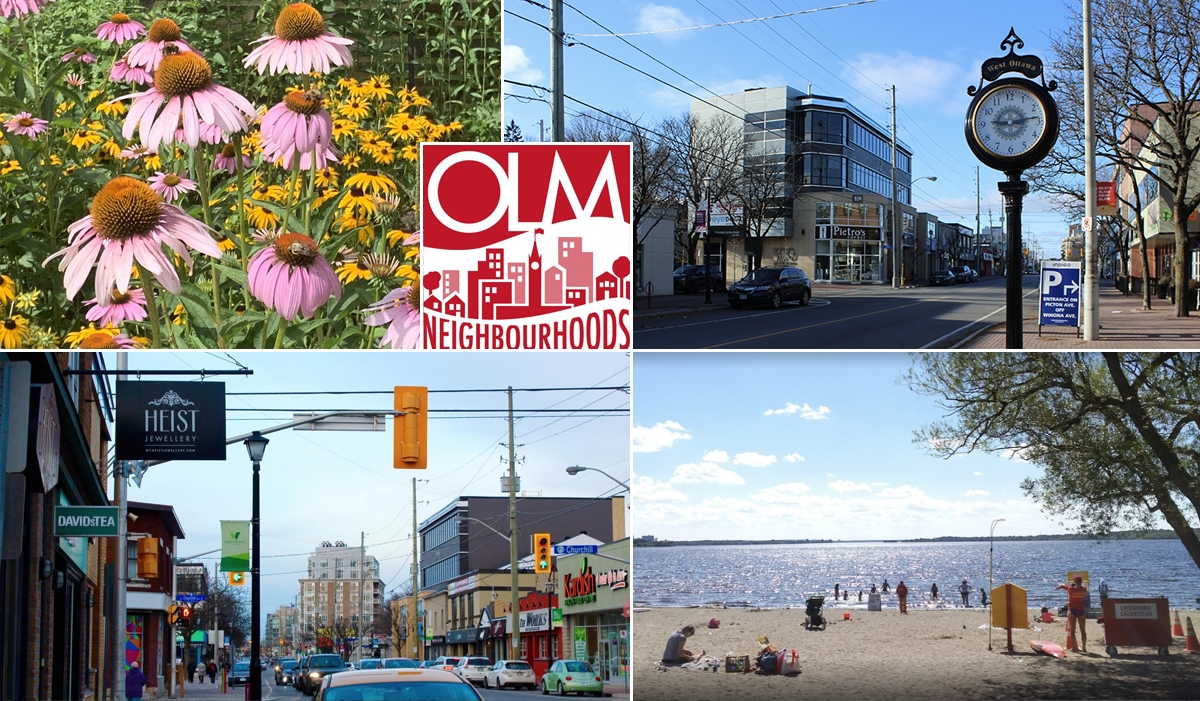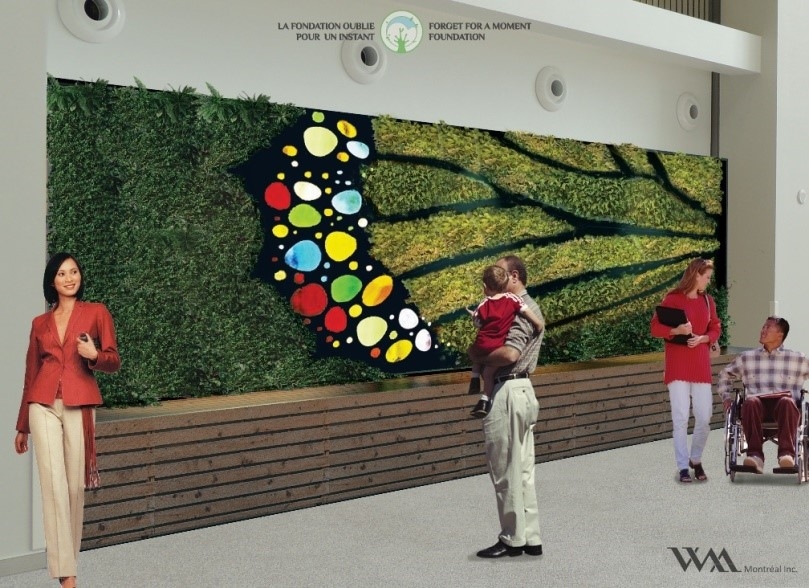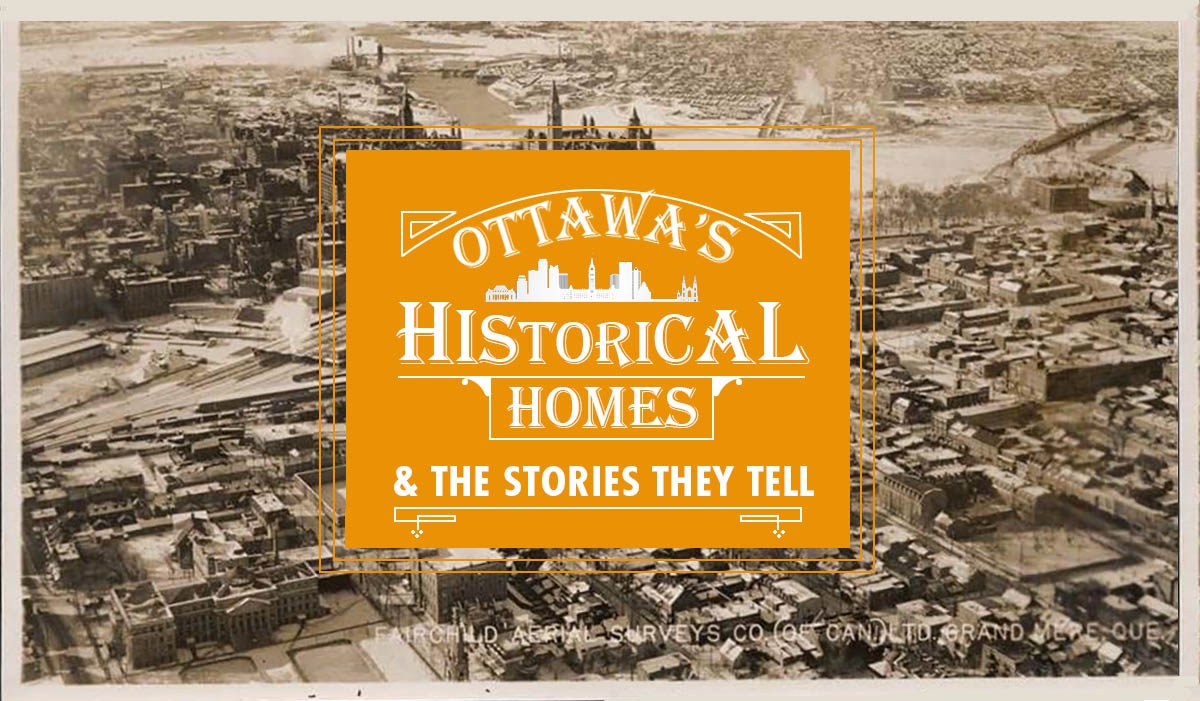
Ottawa’s Neighbourhoods: Heading west from Chinatown to Westboro
Above: (CLOCKWISE FROM TOP LEFT) The historic gardens of Maplelawn; Looking west down Richmond Road in Westboro; Westboro is a great place to cool off (Photo: Dee Nuwin); Looking east down Richmond Road from the corner of Churchill street (Photo: Anne Dion).
Ottawa never feels more like a tourist destination than when you're walking down Richmond Road, passing one stylish little shop after another. Downtown Ottawa has Parliament Hill and big business, the Market has students and, well, a market, but the walkable area west of the downtown core feels designed with tourists in mind.
This isn't entirely so, but the area shows how the different interests of Ottawa's locals can come together effectively. Visitors to Ottawa like a nice place to rest after viewing the main sights, government officials like to take in a little sophistication after they leave work, and students arriving for our two major universities want to continue expanding their range of experiences once they leave class.
Plenty of places in Westboro serve just this role, from trendy restaurants, the beaches along the river, and a variety of nice parks and gardens to get lost in.
As you head west along Somerset, which later becomes Wellington and then Richmond for some reason, you’ll first come across a variety of little shops housed in 2-3 storey buildings. This is Chinatown, though the area has several other Asian subcultures represented as well, a residential area south of the still-undeveloped LeBreton Flats. The area sprung up in the 1970s after fallout from the Vietnam War increased travel to Canada, and is recognizable by its colourful archway, built in 2010. This is a great place to try one of several unique restaurants in the area, as well as a variety of small businesses and specialty grocery stores such as Kowloon Market. Signs, including official street signs, include Mandarin characters, lending the area a bit of added charm.
Towards the end of Chinatown is Little Italy, running up and down Preston Street. The two locations overlap amusingly, with more than one Italian restaurant sitting next to an Asian restaurant. Whether you prefer pho or fettucine, Preston and Somerset has the noodle for you! The area also has its own distinctive archway near Carling, and is yet another special corridor of the city. Buildings with more modern construction like Preston Square and the new tower near Dow’s Lake make the area feel more developed in places.
Further west we find Hintonburg and Wellington. Equally close to both Carleton and Ottawa University, with Algonquin College not far behind, this area’s aesthetic feels particularly tailored for all the city’s students. The area’s signature doughnut shop, SuzyQ, is here (try them, they’re delicious), as are several more bars and cafés. One of the city’s new legal marijuana dispensaries, Superette, is here, near where an illegal dispensary used to be. You can rely on most businesses in this part of town to have vegetarian options available for their diners. Businesses have a more stylized feel, such as the Ministry of Coffee’s signature wood-panelled exterior.
What sets these areas apart from downtown is their relaxed nature. This is where Ottawa starts to become residential. Without tall buildings surrounding you on all sides, or the sound of so much traffic zooming around, it’s easier to sit at a table with company, possibly on a patio, and unwind. In particular, Little Italy is a great place to go for a walk when you’re done visiting Dow’s Lake. Just walk for a few minutes up the road, and stop when a café catches your eye.
Further down the road we find Westboro, notable for a nice beach on the Ottawa River and some larger stores. Beyond the usual mix of cafes and restaurants, the area has a massive Superstore, and one of the largest sports stores in the city, the MEC. Baker’s Street Cafe is a nice place to get breakfast there, and Gezellig is an impressive high-end restaurant. Don’t miss Maplelawn Garden just west of there, a rare example of a 19th century walled garden, featuring uncommon European design.
Westboro beach is a nice sandy spot to go for a cool swim, then get some food under the shade of tall trees at the beachside café. It’s probably worth noting at this point that there’s a bike route running all the way along the riverside to downtown Ottawa. It’s a very pleasant bike ride, with a beautiful view of the water, and makes getting downtown on two wheels easier.
These different areas with unique feels are not entirely a coincidence: as with Little Italy, Chinatown, and Wellington, Westboro has a Business Improvement Area funded by the City and composed of businesses in the area. These organizations seek to define different areas of Ottawa as distinct communities, and present a distinct image to visitors.
It’s at this point, several blocks south of Richmond, that Carling Avenue starts coming into its own. Carling starts properly at Bronson Avenue and heads west, passing by the Ottawa Civic Hospital and the north end of the sprawling Experimental Farm. As it passes the highway, Carling becomes the place where you’ll often find yourself going to do “this and that”. It is the north end of Carlington, where numerous auto repair places work, and features a massive two-storey Canadian Tire. International Kafia Coffee is a personal favourite just south of there, providing ground gourmet coffee not found elsewhere.
Carling used to be home to three distinct shopping malls, Westgate, Carlingwood and Lincoln Fields, although Lincoln Fields has recently closed down for redevelopment. I shed no tears for this, as Lincoln Fields was in poor shape and full of unrented units prior to its closure. The L-shaped Westgate mall has some unrented units too, but is nice to have in the area for things like its Service Ontario location. Carlingwood however is in excellent shape, not as large as either Bayshore or Rideau but well-maintained, and possessed of a Loblaw’s, Dollar Store, and a nice food court to boot.
I hope you’ve enjoyed our hypothetical drive westwards out of Ottawa. I’m sure the trip felt familiar to anyone who commutes home along Carling or Somerset, and perhaps a little nostalgic for those who have lately been working from home. In some sense these are all distinct communities rather than something easily defined, but cars have a way of making places come together in our minds. When you leave downtown Ottawa and traffic is light, every place north of the highway before Bayshore is about 10 minutes away. In those moments, Ottawa still feels like a small town.









